Phonics Teaching Resources
Make teaching phonics easy with printable phonics worksheets, activities, games and more designed for elementary ELA and ELAR teachers.
This collection of curriculum-aligned teaching resources has been carefully reviewed by our expert teaching team to make sure every resource is classroom-ready — so we can make your lesson planning easier!
New to teaching phonics, or just looking for new ways to engage your students? Read on for a primer from our teacher team!
What Is Phonics?
You've likely heard the word "phonics" thousands of times throughout your own education and maybe on one of those old as from the '90s. But what is phonics, exactly?
Phonics is technically defined as the systematic instruction of the relationships between letters and sounds in written language. But that's a mouthful, isn't it? More simply, phonics is the word we use to refer to the method of teaching reading by focusing on the relationship between written letters and the sounds they represent.
In phonics, kids learn how to decode written words by recognizing the sound-symbol correspondence.
Phonics vs. Phonemic Awareness
When we start talking about letters and their sounds, we start to wander into phonemic awareness territory. So what's the difference?
The words phonics and phonemic are similar, and the two concepts are — surprise, surprise — related. But there are key differences.
Phonemic awareness is essentially the ability to identify and manipulate individual sounds — aka phonemes — in spoken language. It's those individual sounds and their correspondence to the letter symbols that can be used by kids to then decode written words.
So students learn to recognize the individual sounds of spoken language (phonemes) and how these sounds can be represented by letters (graphemes) in written language. Then they apply this knowledge to decode written words by understanding the sound-symbol correspondence.
Consider this example:
- Let's say your student can identify the separate sounds in a spoken word such as "cat" (i.e., /k/ /a/ /t/). That's phonemic awareness.
- Now let's say you're teaching that same student that the letter "c" represents the /k/ sound and that the letter "a" represents the /a/ sound, and that these sounds combine to form the word "cat." That's phonics!
How to Teach Phonics
OK, you probably already know that phonics is all about teaching word recognition via grapheme-phoneme associations and letter-sound correspondences.
It’s a means of teaching early readers the pieces that make up a word so they can blend them together to decode the English language as readers and writers.
But how do you teach it?
In the earliest stages, phonics instruction typically begins with teaching students the most common letter-sound relationships. You start with consonants, then move on to vowels, then consonant blends.
Students then learn to sound out words by decoding the letters and blending the sounds together to form words.

Phonics Vocabulary Terms
The English language system is one of the hardest to teach and learn, so how do you teach phonics? Let’s start with the phonics vocabulary.
- For starters, there are 26 letters that create approximately 44 phonemes, the word for the individual speech sounds that make up words. Put together, phonemes make words. OK, easy enough, right?
- Well, these phonemes can be written in over more than 200 different letter combinations, known as graphemes. Graphemes can be made up of 1 letter (such as “p” in “pig”), 2 letters (such as “gh” in ghost), 3 letters (such as “igh” in night), or 4 letters (such as “ough” in rough).
- Then there are digraphs or two letters that work together to make one sound — such as “ph” in graph. But wait, isn’t that a grapheme? Yup, a digraph is a type of grapheme.
- So is a trigraph, trigraphs, aka three letters that work together to make one sound, such as “dge” in edge.
- And if you’re teaching phonics, you can’t forget dipthongs, the name for a sound that is formed by the combination of two vowels in a single syllable, such as “ou” in loud.
Most students will spend kindergarten, first, and even second grade getting a handle on all phonics elements!
- Plus Plan
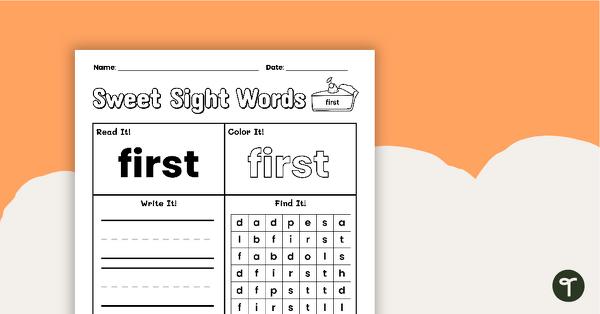
Sweet Sight Words Worksheet - FIRST
Practice reading, writing, and identifying the high-frequency word “first” from the Second Grade Dolch sight words list.
- Plus Plan
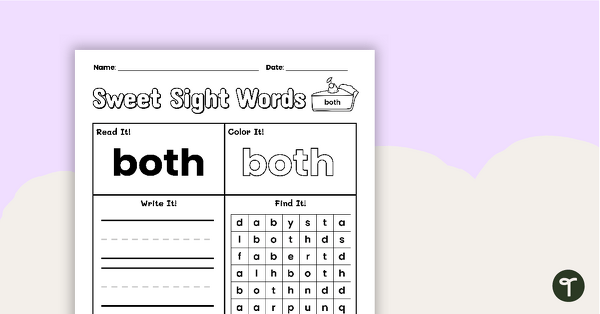
Sweet Sight Words Worksheet - BOTH
Practice reading, writing, and identifying the high-frequency word “both” from the Second Grade Dolch sight words list.
- Plus Plan
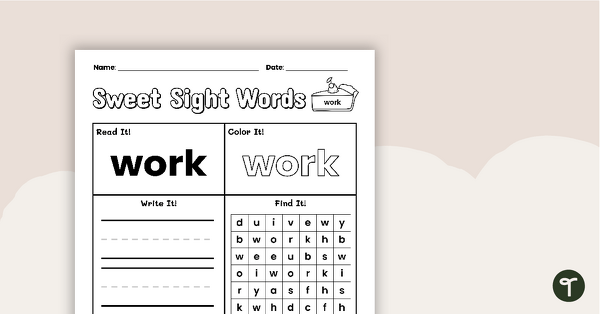
Sweet Sight Words Worksheet - WORK
Practice reading, writing, and identifying the high-frequency word ”work” from the Second Grade Dolch sight words list.
- Plus Plan
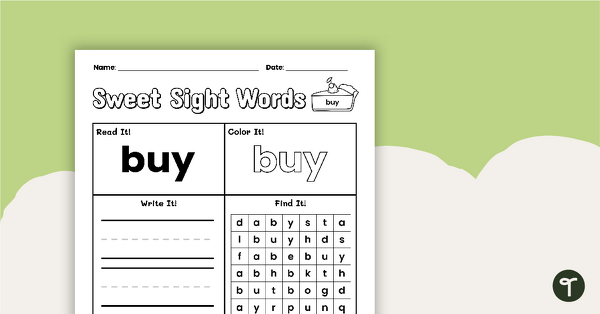
Sweet Sight Words Worksheet - BUY
Practice reading, writing, and identifying the high-frequency word “buy” from the Second Grade Dolch sight words list.
- Plus Plan
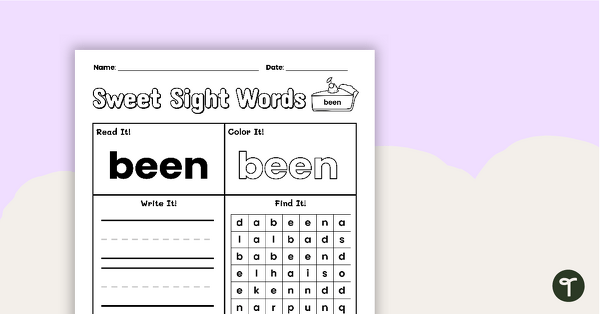
Sweet Sight Words Worksheet - BEEN
Practice reading, writing, and identifying the high-frequency word “been” from the Second Grade Dolch sight words list.
- Plus Plan
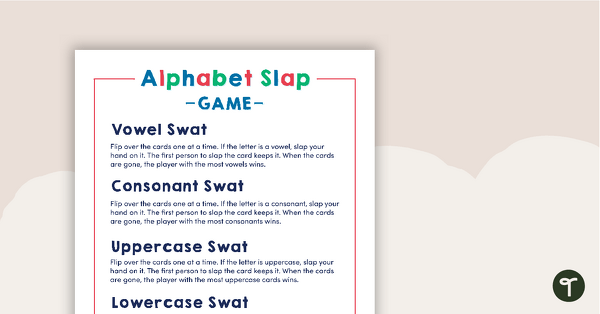
Alphabet Slap
A fun game for letter, consonant, and vowel recognition.
- Plus Plan
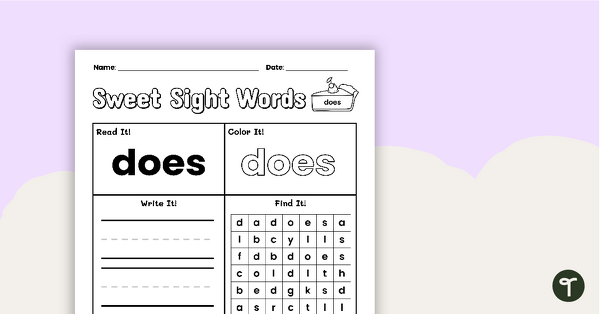
Sweet Sight Words Worksheet - DOES
Practice reading, writing, and identifying the high-frequency word “does” from the Second Grade Dolch sight words list.
- Plus Plan

Sweet Sight Words Worksheet - FOUND
Practice reading, writing, and identifying the high-frequency word “found” from the Second Grade Dolch sight words list.
- Plus Plan
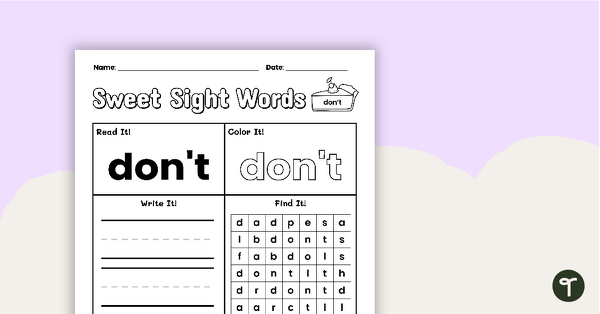
Sweet Sight Words Worksheet - DON'T
Practice reading, writing, and identifying the high-frequency word “don’t” from the Second Grade Dolch sight words list.
- Plus Plan
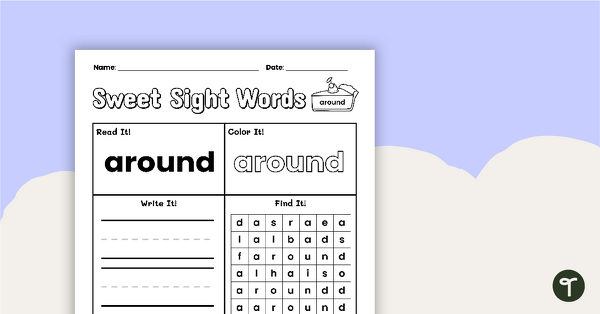
Sweet Sight Words Worksheet - AROUND
Practice reading, writing, and identifying the high-frequency word “around” from the Second Grade Dolch sight words list.
- Plus Plan
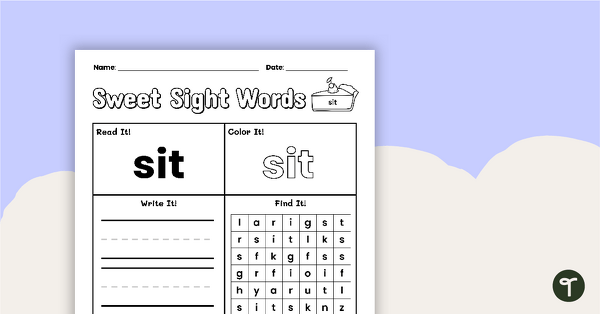
Sweet Sight Words Worksheet - SIT
Practice reading, writing, and identifying the high-frequency word “sit” from the Second Grade Dolch sight words list.
- Plus Plan

Initial Sound Clip Cards (Version 1)
A hands-on activity to practice initial sounds.
- Plus Plan
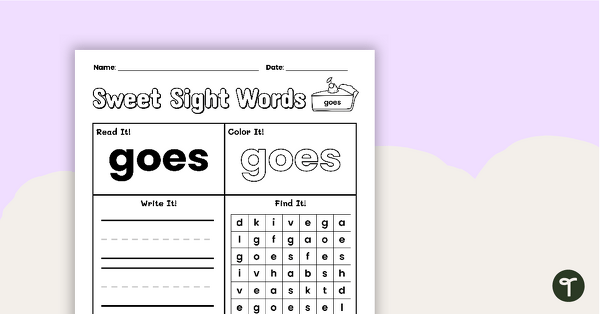
Sweet Sight Words Worksheet - GOES
Practice reading, writing, and identifying the high-frequency word “goes” from the Second Grade Dolch sight words list.
- Plus Plan
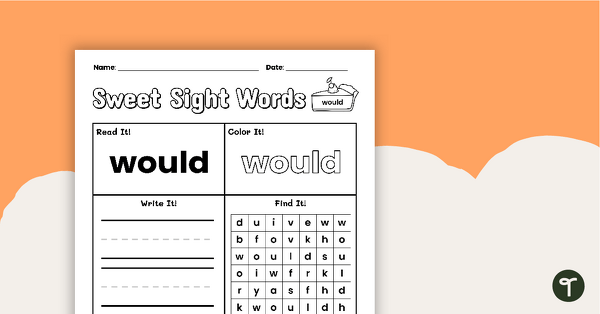
Sweet Sight Words Worksheet - WOULD
Practice reading, writing, and identifying the high-frequency word “would” from the Second Grade Dolch sight words list.
- Plus Plan
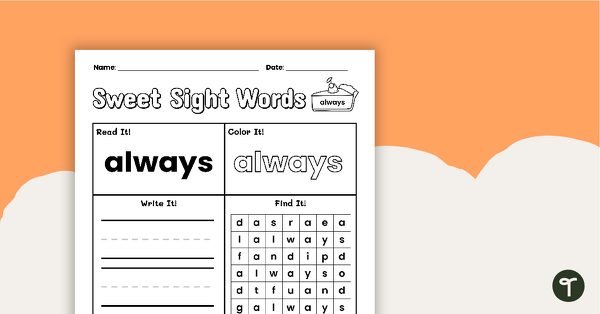
Sweet Sight Words Worksheet - ALWAYS
Practice reading, writing, and identifying the high-frequency word “always” from the Second Grade Dolch sight words list.
- Plus Plan
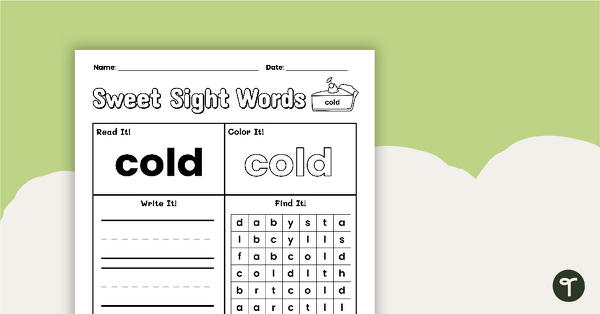
Sweet Sight Words Worksheet - COLD
Practice reading, writing, and identifying the high-frequency word “cold” from the Second Grade Dolch sight words list.
- Plus Plan

Sight Word Mini Books
A set of 12 mini sight word books to use as little readers with your students.
- Plus Plan
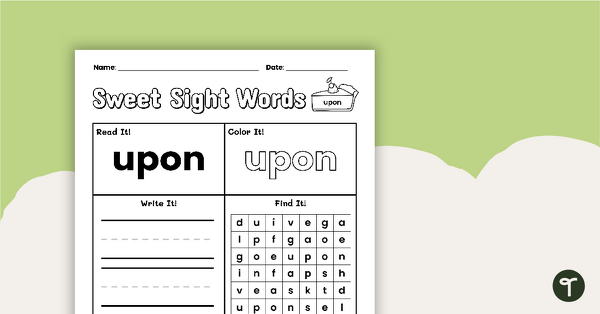
Sweet Sight Words Worksheet - UPON
Practice reading, writing, and identifying the high-frequency word “upon” from the Second Grade Dolch sight words list.
- Plus Plan
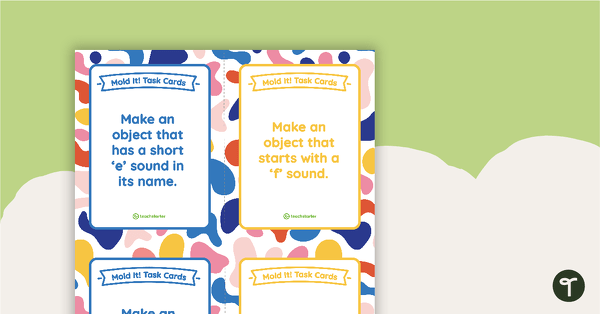
Mold It! Task Cards
A set of 28 task cards to use with modeling clay.
- Plus Plan

Sweet Sight Words Worksheet - WHY
Practice reading, writing, and identifying the high-frequency word “why” from the Second Grade Dolch sight words list.
- Plus Plan
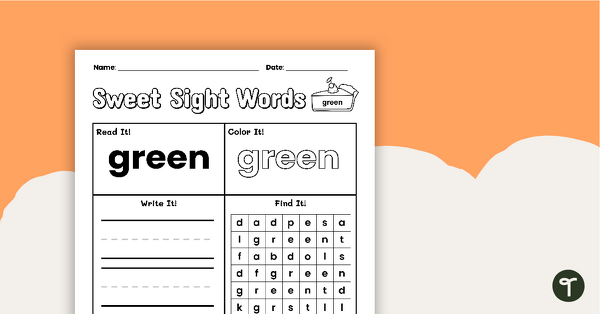
Sweet Sight Words Worksheet - GREEN
Practice reading, writing, and identifying the high-frequency word “green” from the Second Grade Dolch sight words list.
- Plus Plan

Sweet Sight Words Worksheet - READ
Practice reading, writing, and identifying the high-frequency word “read” from the Second Grade Dolch sight words list.
- Plus Plan
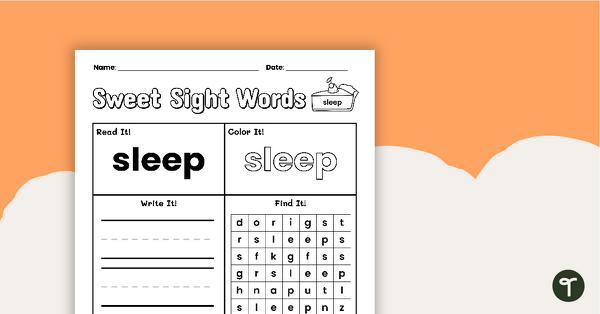
Sweet Sight Words Worksheet - SLEEP
Practice reading, writing, and identifying the high-frequency word “sleep” from the Second Grade Dolch sight words list.
- Plus Plan
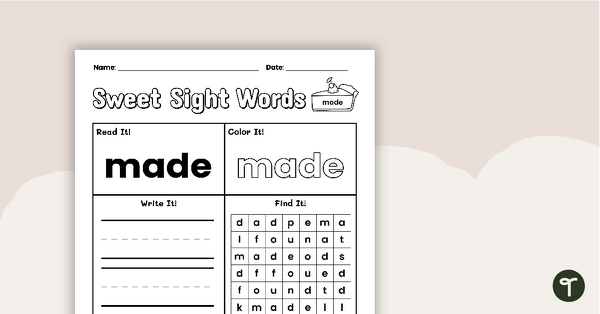
Sweet Sight Words Worksheet - MADE
Practice reading, writing, and identifying the high-frequency word “made” from the Second Grade Dolch sight words list.
- Plus Plan
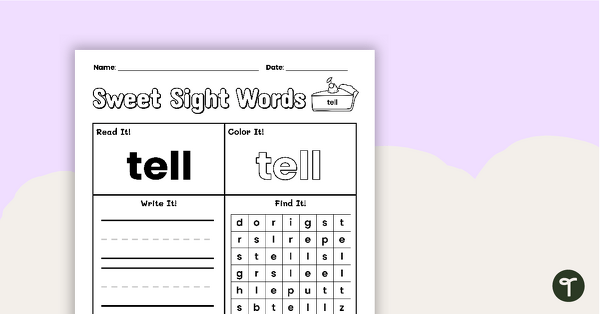
Sweet Sight Words Worksheet - TELL
Practice reading, writing, and identifying the high-frequency word “tell” from the Second Grade Dolch sight words list.
- Plus Plan

Sweet Sight Words Worksheet - GAVE
Practice reading, writing, and identifying the high-frequency word “gave” from the Second Grade Dolch sight words list.
- Plus Plan
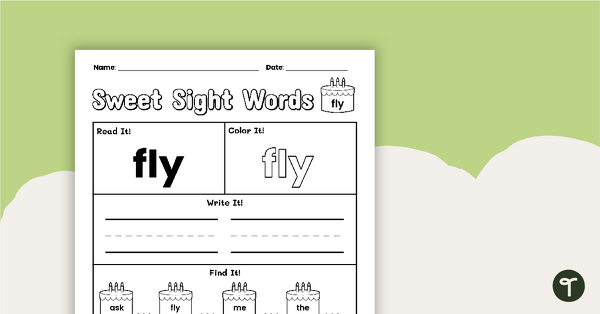
Sweet Sight Words Worksheet - FLY
Practice reading, writing, and identifying the high-frequency word “fly” from the First Grade Dolch sight words list.
- Plus Plan
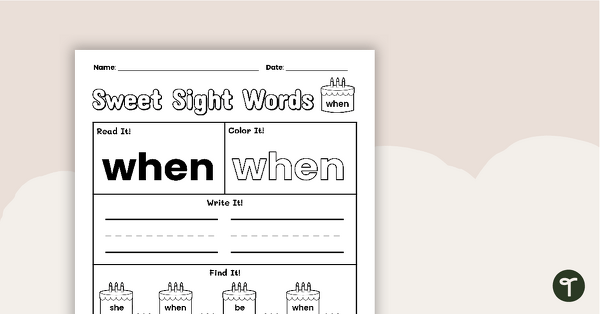
Sweet Sight Words Worksheet - WHEN
Practice reading, writing, and identifying the high-frequency word “when” from the First Grade Dolch sight words list.
- Plus Plan
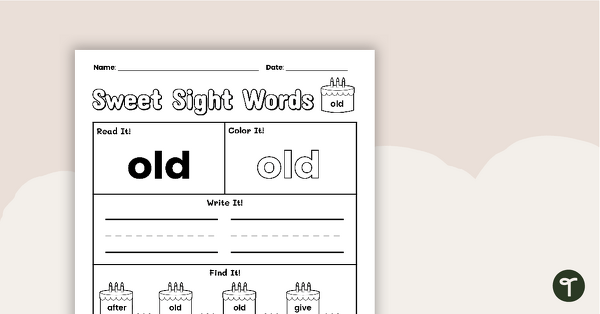
Sweet Sight Words Worksheet - OLD
Practice reading, writing, and identifying the high-frequency word “old” from the First Grade Dolch sight words list.
- Plus Plan
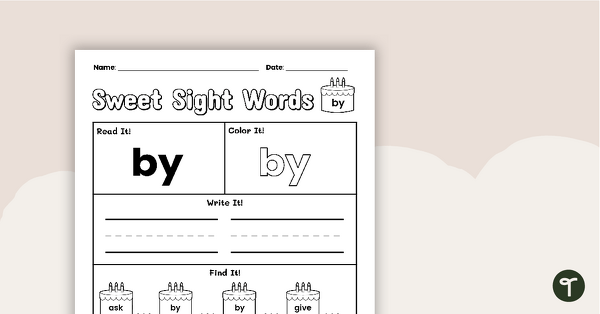
Sweet Sight Words Worksheet - BY
Practice reading, writing, and identifying the high-frequency word “by” from the First Grade Dolch sight words list.
- Plus Plan
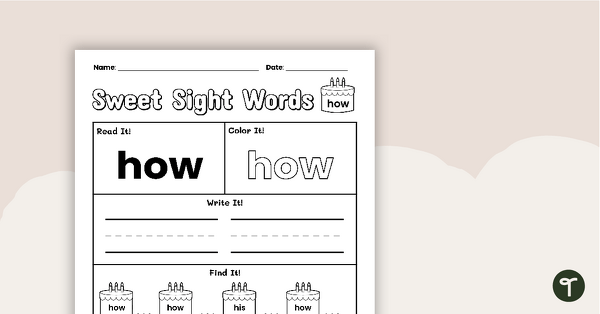
Sweet Sight Words Worksheet - HOW
Practice reading, writing, and identifying the high-frequency word “how” from the First Grade Dolch sight words list.
- Plus Plan
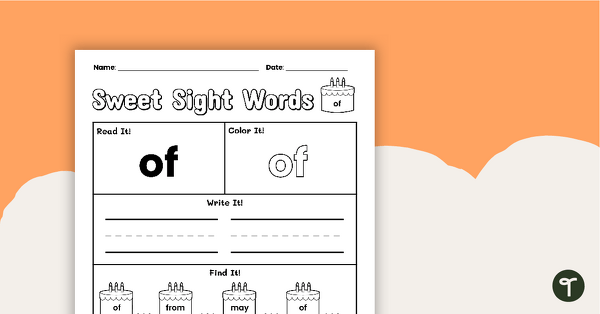
Sweet Sight Words Worksheet - OF
Practice reading, writing, and identifying the high-frequency word “of” from the First Grade Dolch sight words list.